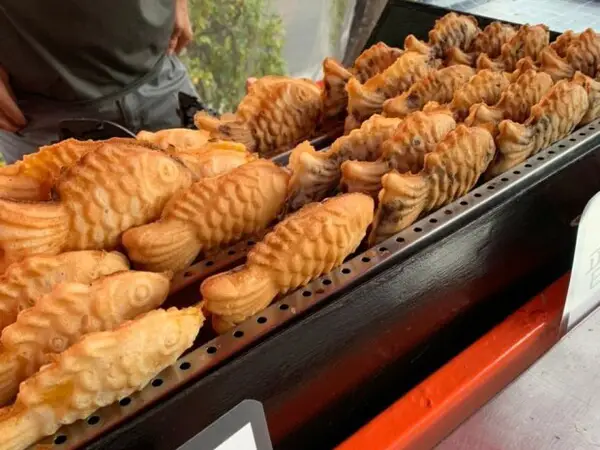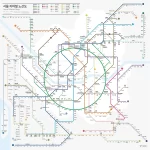In recent times, Tanghulu, originating from China, gained some traction in Korea, yet it hasn’t firmly established itself as a traditional icon of Korean street cuisine. Additionally, in Korea’s clearly defined seasons, specific street foods are exclusively available during winter.
Among the diverse array of Korean winter street foods, unquestionably, one of the most emblematic is Bungeoppang.
What is Bungeoppang
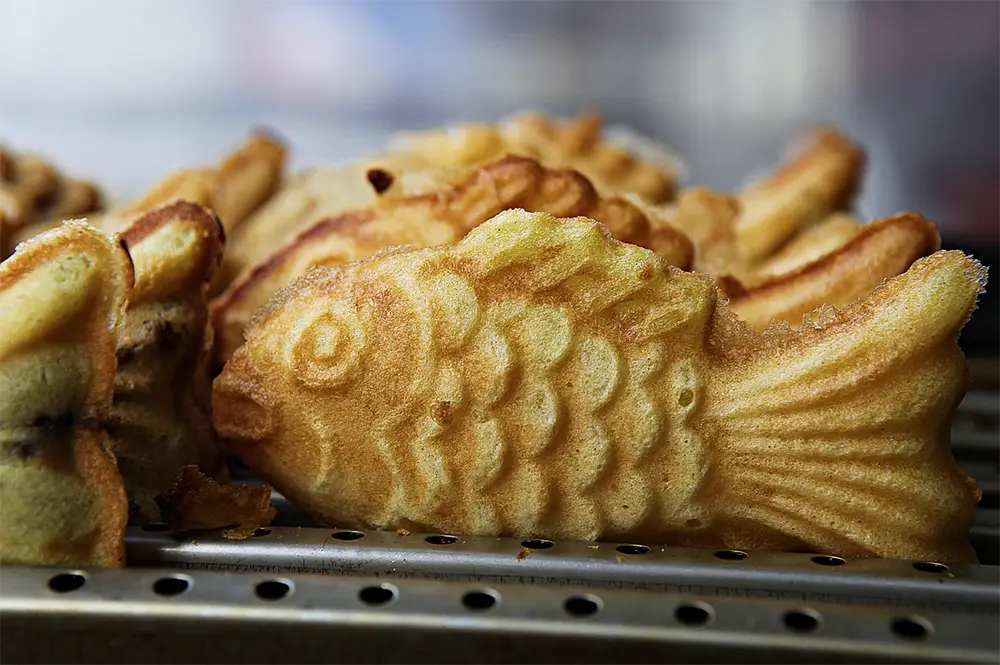
Bungeoppang is crafted by baking a flour dough stuffed with sweet red bean paste or alternative fillings within a fish-shaped mold, resulting in a treat that bridges the gap between bread and pastry. From an outsider’s viewpoint, it could draw comparisons to a food item like a waffle.
Bungeoppang vs taiyaki
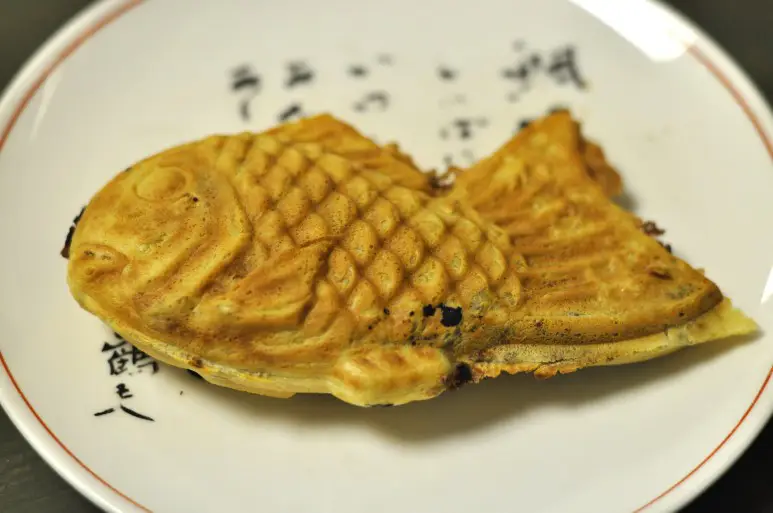
The image displayed above depicts Japan’s Taiyaki. When compared to Korea’s Bungeoppang, the resemblance is striking. Undoubtedly, Korea’s Bungeoppang appears to be a localized rendition of Japan’s Taiyaki, which has been modified and embraced within the local culture.
In Japan, Taiyaki is characterized by its “Sea bream” shape, and both the filling and batter differ slightly from those found in Bungeoppang.
Varations to Bungeoppang
Bungeoppang in its original form
As mentioned above, the traditional Bungeoppang is made by putting sweet red bean paste into a flour batter and shaping it into a fish form. Typically, when we refer to “Bungeoppang,” it’s this particular type, and it’s one of the most consistently beloved and popular items.
Custard Bungeoppang
Around 10 years ago, Bungeoppang filled custard was introduced. It’s typically sold at a slightly higher price compared to Bungeoppang filled with sweet red bean paste. Apart from these, there are variations with fillings like pizza, sweet potato, cheese, and others, but aside from Bungeoppang with red bean paste, custard Bungeoppang is one of the more common variations.
Bungeoppang vs ingeoppang
This perception is often influenced by Korea’s view of the crucian carp (ingeo or 잉어 in Korean) as a higher-quality fish compared to the carp (bungeo or 붕어 in Korean). In the case of Ingeobbang, unlike Bungeoppang, it uses glutinous rice flour in the batter, resulting in a slightly lighter color and a chewier texture. Even the mold used for shaping it may differ somewhat from the traditional Bungeoppang mold. Typically, Ingeobbang tends to be a bit more expensive than Bungeoppang due to these differences.
Bungeoppang in mass production
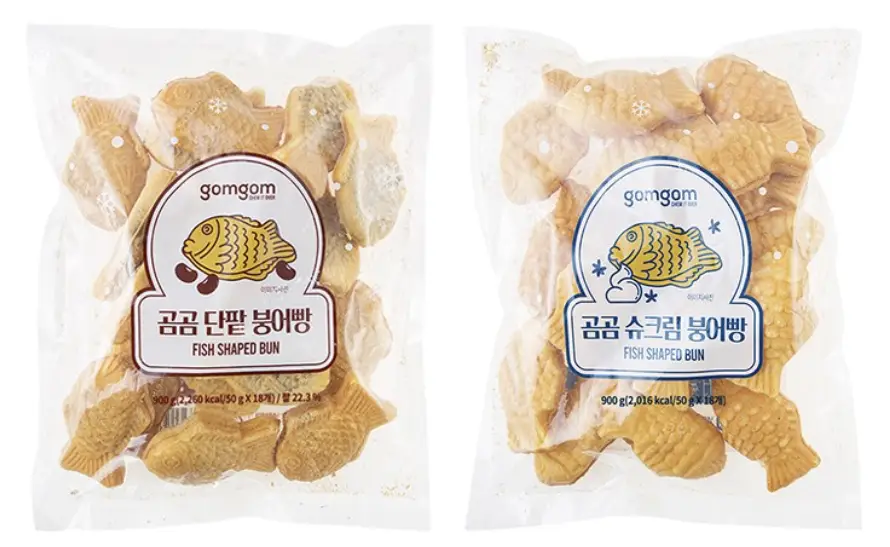
With the decrease in street vendors selling Bungeoppang, packaged versions have started being sold in supermarkets and online. These are typically distributed in a frozen state and can be heated up using a microwave or an air fryer. However, the taste and atmosphere of these packaged versions often can’t match up to those sold by street vendors.
Bungeoppang DIY kit
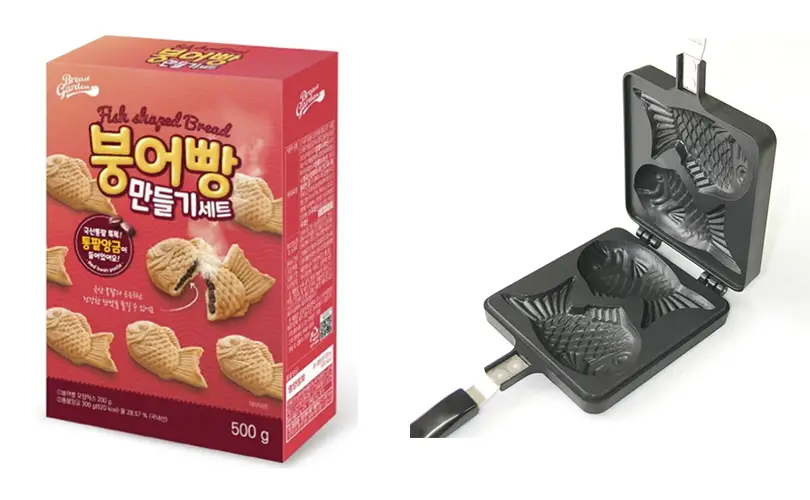
Home Bungeoppang DIY kits” have started to be sold, allowing people to make Bungeoppang themselves. Although there is the burden of having to buy a pan in the shape of a fish, these kits seem to sell quite well.
Where the kit is available https://shopee.sg/BREAD-GARDEN-Bungeoppang-Mix-With-Red-Bean-Paste-_-Korea-Fish-Shaped-Pastry-i.296289579.10112636114?sp_atk=536d7fff-e176-4b95-b9d0-f2c634996048&xptdk=536d7fff-e176-4b95-b9d0-f2c634996048
Bungeoppang with Ice Cream
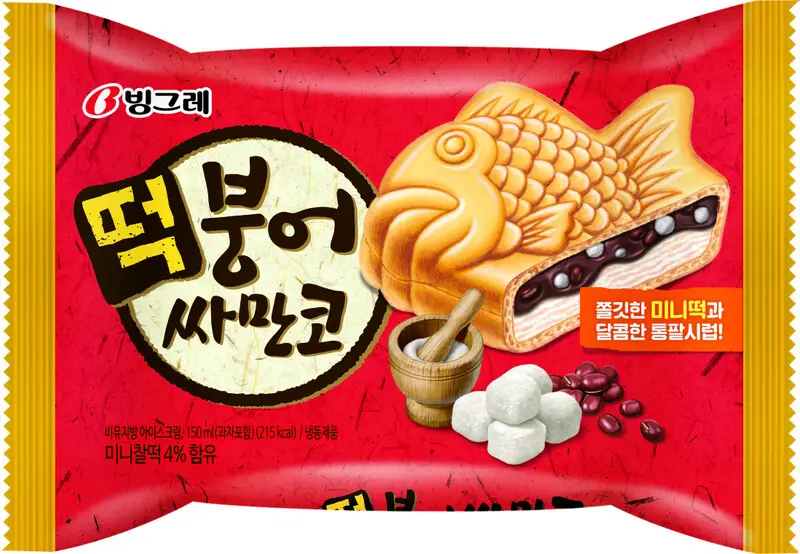
There are ice cream products shaped like Bungeoppang being sold by various companies. The outer layer resembles an ice cream cone and is made of a biscuit-like material, while the inside typically contains ice cream and sweet red bean paste. Similarly, there are variations with different fillings inside, offering a range of flavors beyond the traditional red bean paste.
Bungeoppang in 2023
Finding street vendors selling Bungeoppang, once a common sight around alley corners, has become challenging lately. There are fewer vendors now, and they’ve shifted to using commercial ingredients for the batter and fillings, leading to increased costs. In an era where the minimum wage hovers around 10,000 KRW (7.70 USD) per hour, fewer individuals are willing to endure harsh winter conditions on the streets for minimal profits.
Though Bungeoppang might fade from the streets more gradually, it could meet a fate akin to roasted sweet potatoes or chestnuts—formerly beloved winter street foods in Korea that gradually vanished from stalls due to similar challenges.
